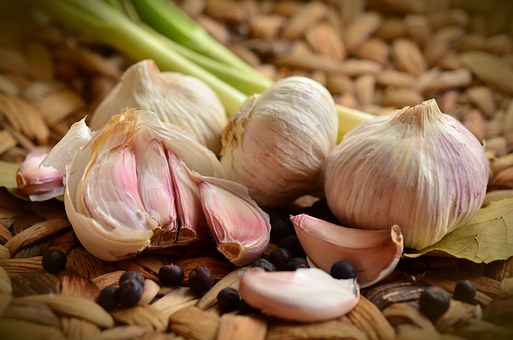Withaferin a Inhibits Activation of Signal Transducer and Activator of Transcription 3 in Human Breast Cancer Cells
© Authored by PubMed
© HealthyMuslim. See Terms and Conditions
Copy Link
Email
Print

Ashwagandha is an exotic Indian herb which has remarkable stress-relieving properties. In addition to its excellent protective effects on the nervous system, ashwaganDHA may be a promising alternative treatment for a variety of degenerative diseases such as Alzheimer's and Parkinson's. AshwaganDHA has powerful antioxidant properties that seek and destroy the free radicals that have been implicated in aging and numerous disease states. Even more remarkable, emerging evidence suggests that ashwaganDHA has anti-cancer benefits as well.
Lee J, Hahm ER, Singh SV. Withaferin A inhibits activation of signal transducer and activator of transcription 3 in human Breast cancer cells. 1. Carcinogenesis. 2010 Nov;31(11):1991-8. Epub 2010 Aug 19.
Lee J, Hahm ER, Singh SV. Withaferin A inhibits activation of signal transducer and activator of transcription 3 in human Breast cancer cells. 1. Carcinogenesis. 2010 Nov;31(11):1991-8. Epub 2010 Aug 19.
We have shown previously that withaferin A (WA), a promising anticancer constituent of Ayurvedic medicine plant Withania somnifera, inhibits growth of human Breast cancer cells in culture and in vivo in association with apoptosis induction. The present study builds on these observations and demonstrates that WA inhibits constitutive as well as interleukin-6 (IL-6)-inducible activation of signal transducer and activator of transcription 3 (STAT3), which is an oncogenic transcription factor activated in many human malignancies including Breast cancer. The WA treatment (2 and 4 ?M) decreased constitutive (MDA-MB-231) and/or IL-6-inducible (MDA-MB-231 and MCF-7) phosphorylation of STAT3 (Tyr(705 border=0> and its upstream regulator Janus-activated kinase 2 (JAK2; Tyr(1007/1008 border=0> in MDA-MB-231, which was accompanied by suppression of their protein levels especially at the higher concentration. Exposure of MDA-MB-231 or MCF-7 cells to WA also resulted in suppression of (i) transcriptional activity of STAT3 with or without IL-6 stimulation in both cells; (ii) dimerization of STAT3 (MDA-MB-231) and (iii) nuclear translocation of Tyr(705)-phosphorylated STAT3 in both cells. To our surprise, the IL-6-stimulation, either before or after WA treatment, did not have an appreciable effect on WA-mediated apoptosis in MDA-MB-231 or MCF-7 cell line. The IL-6-stimulated activation of STAT3 conferred a modest protection against WA-mediated suppression of MDA-MB-231 cell invasion. General implication of these findings is that WA can trigger apoptosis and largely inhibit cell migration/invasion of Breast cancer cells even after IL-6-induced activation of STAT3, which should be viewed as a therapeutic advantage for this agent.
Link to this article: Show: HTML Link • Full Link • Short Link
Share or Bookmark this page: You will need to have an account with the selected service in order to post links or bookmark this page.





|
Related Articles:
- Withaferin a Inhibits Breast Cancer Invasion and Metastasis at Sub-Cytotoxic Doses by Inducing Vimentin Disassembly and Serine 56 Phosphorylation
- An Aqueous Extract of Withania Somnifera Root Inhibits Amyloid Fibril Formation in Vitro
- Ashwagandha Leaf Derived Withanone Protects Normal Human Cells Against the Toxicity of Methoxyacetic Acid, a Major Industrial Metabolite
- Behavioural and Neurochemical Evaluation of Perment an Herbal Formulation in Chronic Unpredictable Mild Stress Induced Depressive Model
- A Comparison of the Immunostimulatory Effects of the Medicinal Herbs Echinacea, Ashwagandha and Brahmi
You must be registered and logged in to comment.
Most Popular
Latest Articles
Popular Subjects
Health, fitness and longevity
Based upon the principles of health
in the Qur'an and Prophetic Traditions.
HealthyMuslim.Com
There are two bounties in which
most people lose out: good health
and free time. Al-Bukhari.
The information on this site is provided for educational purposes only. It is not intended as a substitute for professional advice of any kind.























